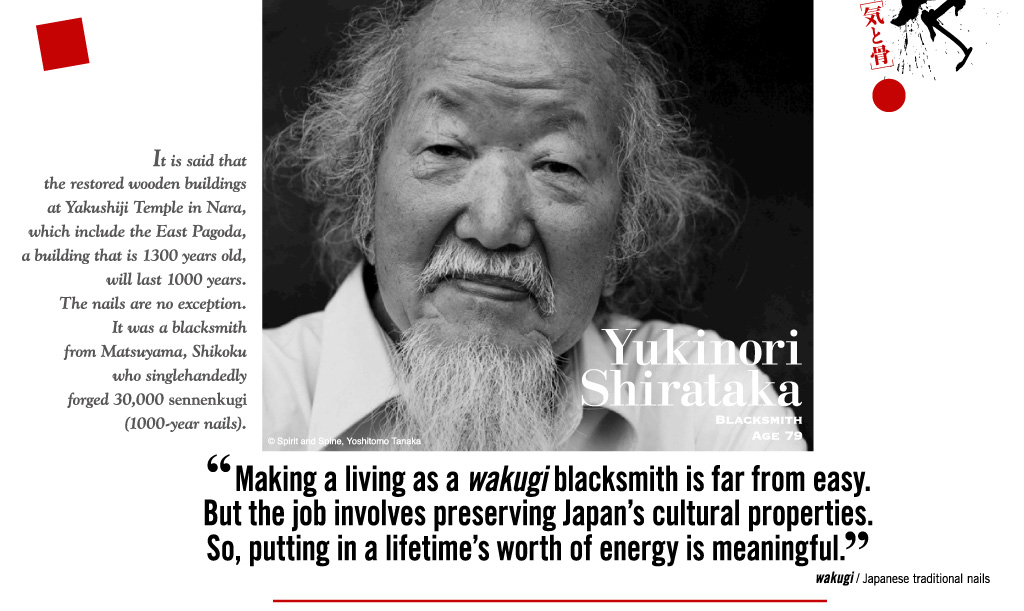Few adults know that this blacksmith with exceptional talent is revered by elementary school students all over Japan. Sennenkugi making has continued to appear in textbooks, and Shirataka has received letters from across the country. The nail made in the Hakuho-period style was reproduced when the temple built in the 7th century was reconstructed. What excites the boys is that Shirataka singlehandedly forged nearly 30,000 nails with a nail no larger than about 1 shaku (about 30 cm) (see photograph on left).
Shirataka did not like forging and in his mid-twenties decided to move to Tokyo. There, he worked at a cutlery shop in Nihonbashi. Meeting master carpenter Tsunekazu Nishioka, a miyadaiku (a carpenter who specializes in shrines and temples), who happened to come to the cutlery shop one day, was a major turning point. In the process of serving as a go-between for restoring ancient tools, Shirataka began to develop a strong desire to make the tools himself, and returned home. Since participating in a reconstruction project for Yakushiji Temple in Nara city, under the supervision of the master carpenter he happened to meet, Shirataka has dedicated himself to forging wakugi, a craft with a rich history.
He has also continued to use the Tosa forging technique to make kiridashi (a small Japanese crafting knife) by using parts from damaged and sunken vessels of the former Japanese Navy. The names of the vessels appear on the kiridashi he makes. The vessel, he says, “can be preserved by making something from it.”
Shirataka’s wife, who had taken care of her father-in-law who suffered from Dementia and her mother-in-law, recently passed away after becoming ill. His daughters took care of his sick wife until the end of her life. He believes that they did this based on an unspoken lesson that their mother had taught them and he is grateful for that.


Yukinori Shirataka
Shirataka was born in Matsuyama City in 1935. Starting in his early childhood, he helped his father by performing mukohzuchi (alternately striking the body of the blade with a hammer). He learned the Tosa technique for forging cutlery from his eldest brother. He moved to Tokyo in 1961. While a student at Chuo University, Shirataka worked at KIYA, a cutlery shop. In 1971, he met master carpenter Tsunekazu Nishioka and returned home the following year. He forged wakugi for buildings such as the West Pagoda and the Main Hall as part of the Yakushiji Temple reconstruction project. He completed several cultural property restoration projects, including Matsuyama Castle, Kintai Bridge, and Toshodaiji Temple.
Cooperation: Matsuyama City Rinri Hojin Kai





































































































